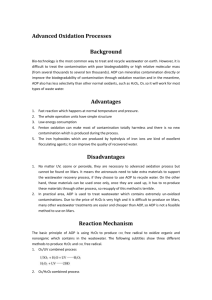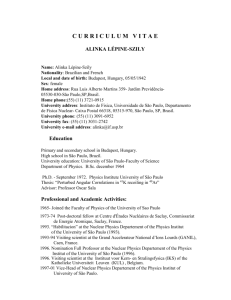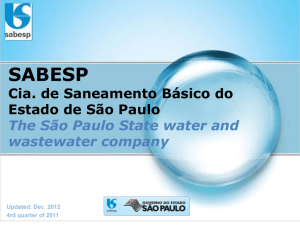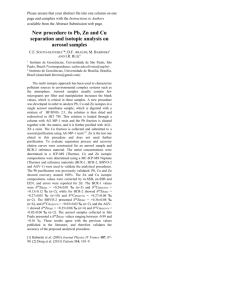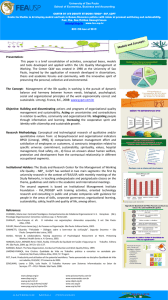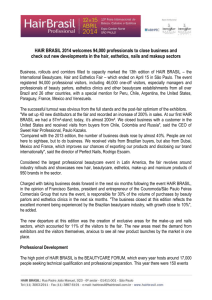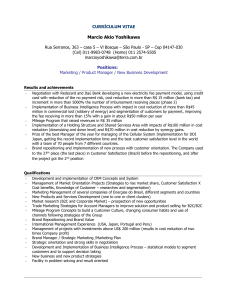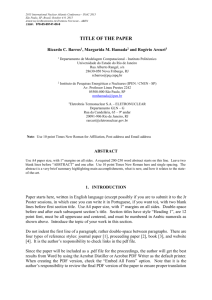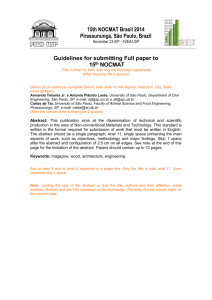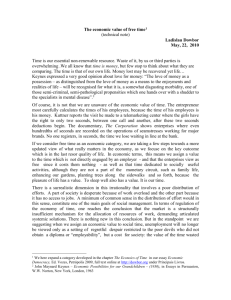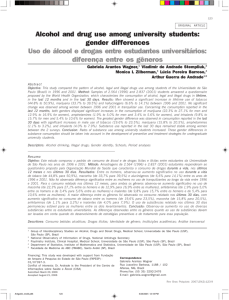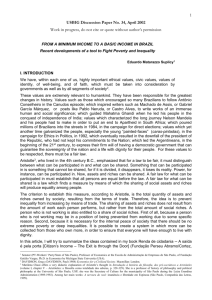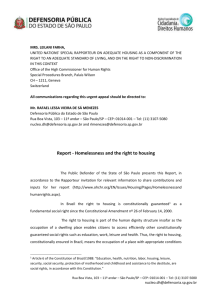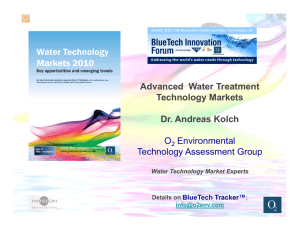integration of photo fenton and activated sludge processes to
advertisement
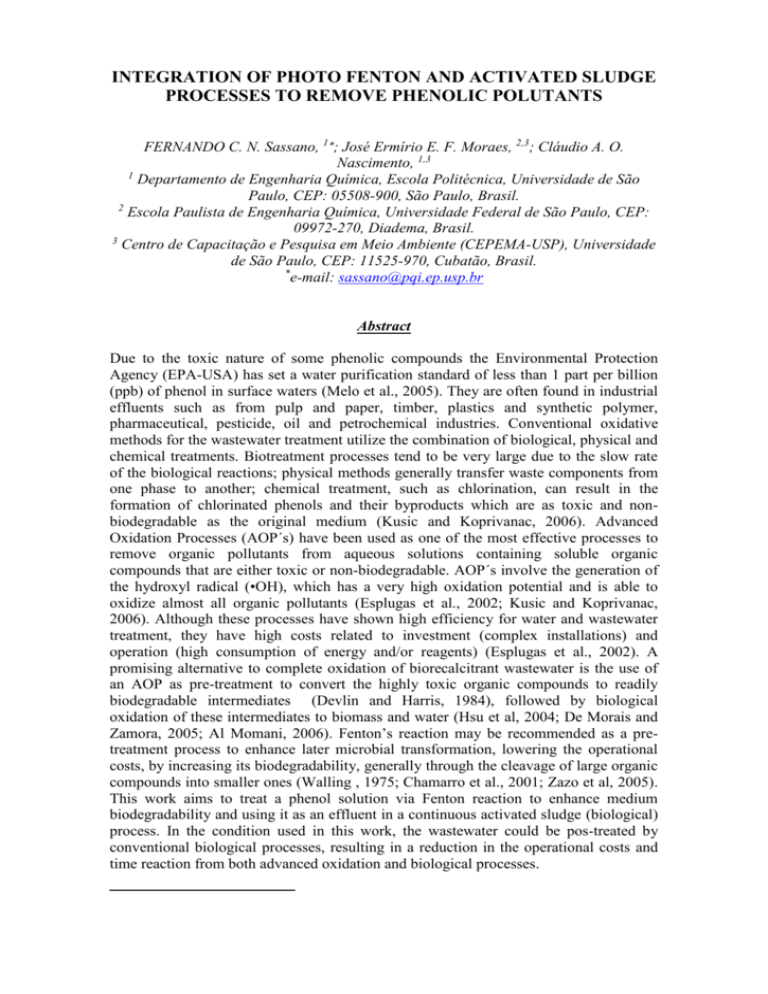
INTEGRATION OF PHOTO FENTON AND ACTIVATED SLUDGE PROCESSES TO REMOVE PHENOLIC POLUTANTS FERNANDO C. N. Sassano, 1; José Ermírio E. F. Moraes, 2,3; Cláudio A. O. Nascimento, 1,3 1 Departamento de Engenharia Química, Escola Politécnica, Universidade de São Paulo, CEP: 05508-900, São Paulo, Brasil. 2 Escola Paulista de Engenharia Química, Universidade Federal de São Paulo, CEP: 09972-270, Diadema, Brasil. 3 Centro de Capacitação e Pesquisa em Meio Ambiente (CEPEMA-USP), Universidade de São Paulo, CEP: 11525-970, Cubatão, Brasil. * e-mail: sassano@pqi.ep.usp.br Abstract Due to the toxic nature of some phenolic compounds the Environmental Protection Agency (EPA-USA) has set a water purification standard of less than 1 part per billion (ppb) of phenol in surface waters (Melo et al., 2005). They are often found in industrial effluents such as from pulp and paper, timber, plastics and synthetic polymer, pharmaceutical, pesticide, oil and petrochemical industries. Conventional oxidative methods for the wastewater treatment utilize the combination of biological, physical and chemical treatments. Biotreatment processes tend to be very large due to the slow rate of the biological reactions; physical methods generally transfer waste components from one phase to another; chemical treatment, such as chlorination, can result in the formation of chlorinated phenols and their byproducts which are as toxic and nonbiodegradable as the original medium (Kusic and Koprivanac, 2006). Advanced Oxidation Processes (AOP´s) have been used as one of the most effective processes to remove organic pollutants from aqueous solutions containing soluble organic compounds that are either toxic or non-biodegradable. AOP´s involve the generation of the hydroxyl radical (•OH), which has a very high oxidation potential and is able to oxidize almost all organic pollutants (Esplugas et al., 2002; Kusic and Koprivanac, 2006). Although these processes have shown high efficiency for water and wastewater treatment, they have high costs related to investment (complex installations) and operation (high consumption of energy and/or reagents) (Esplugas et al., 2002). A promising alternative to complete oxidation of biorecalcitrant wastewater is the use of an AOP as pre-treatment to convert the highly toxic organic compounds to readily biodegradable intermediates (Devlin and Harris, 1984), followed by biological oxidation of these intermediates to biomass and water (Hsu et al, 2004; De Morais and Zamora, 2005; Al Momani, 2006). Fenton’s reaction may be recommended as a pretreatment process to enhance later microbial transformation, lowering the operational costs, by increasing its biodegradability, generally through the cleavage of large organic compounds into smaller ones (Walling , 1975; Chamarro et al., 2001; Zazo et al, 2005). This work aims to treat a phenol solution via Fenton reaction to enhance medium biodegradability and using it as an effluent in a continuous activated sludge (biological) process. In the condition used in this work, the wastewater could be pos-treated by conventional biological processes, resulting in a reduction in the operational costs and time reaction from both advanced oxidation and biological processes.

